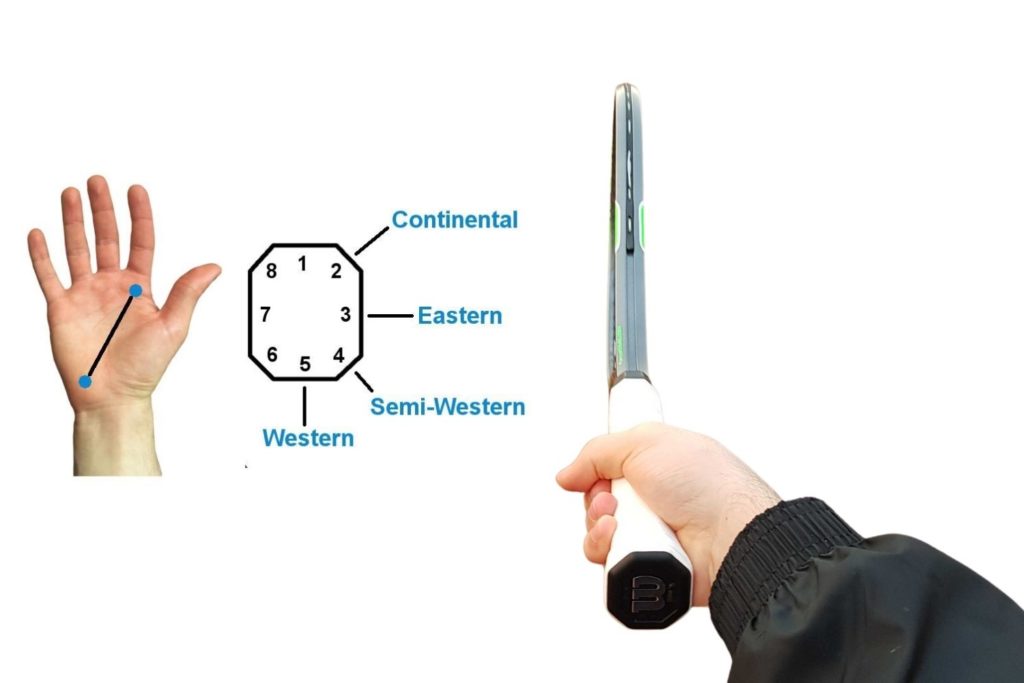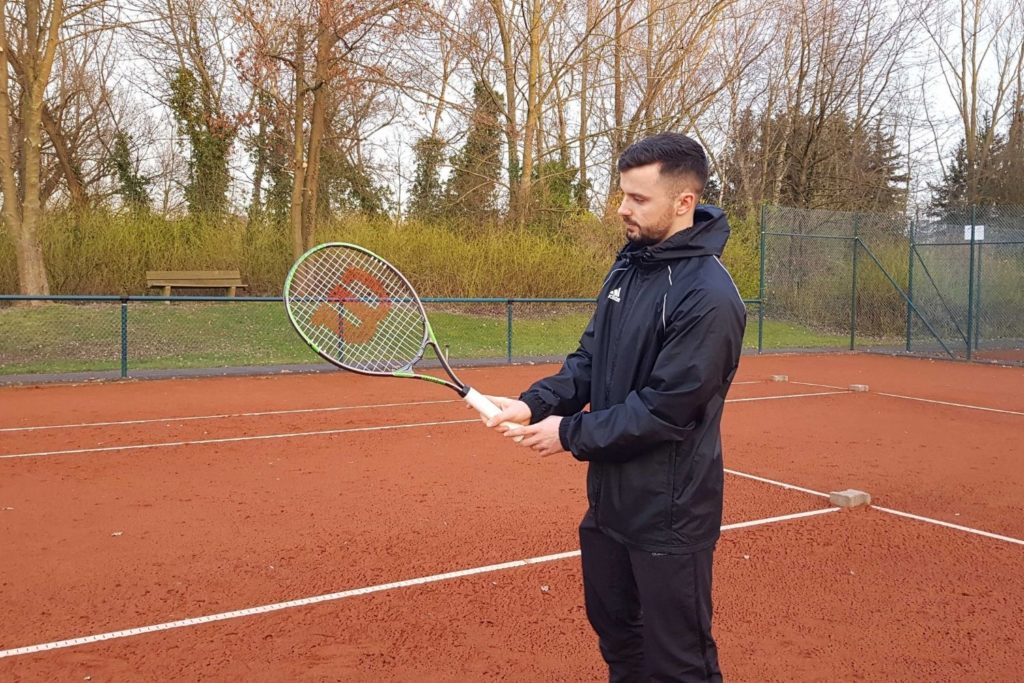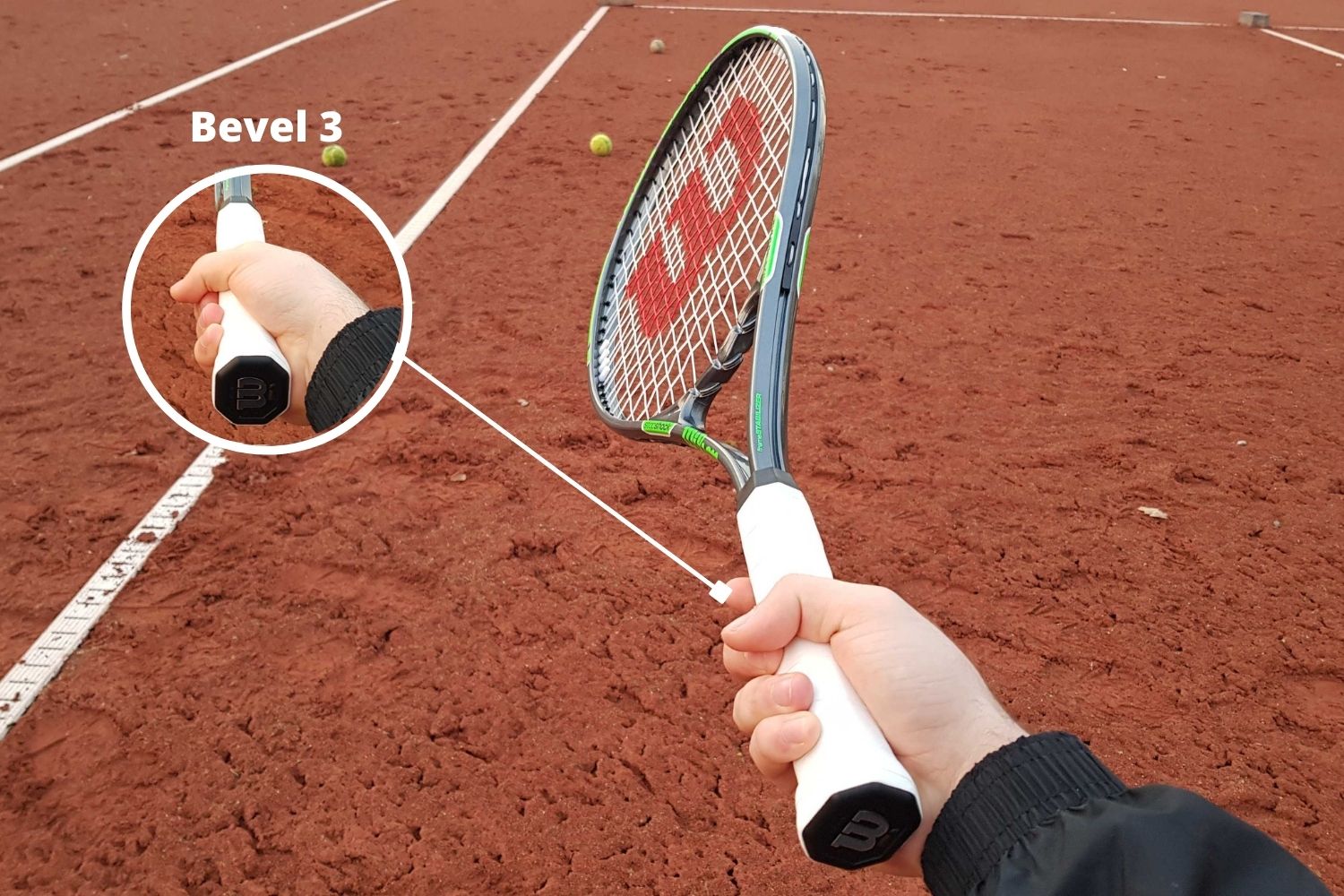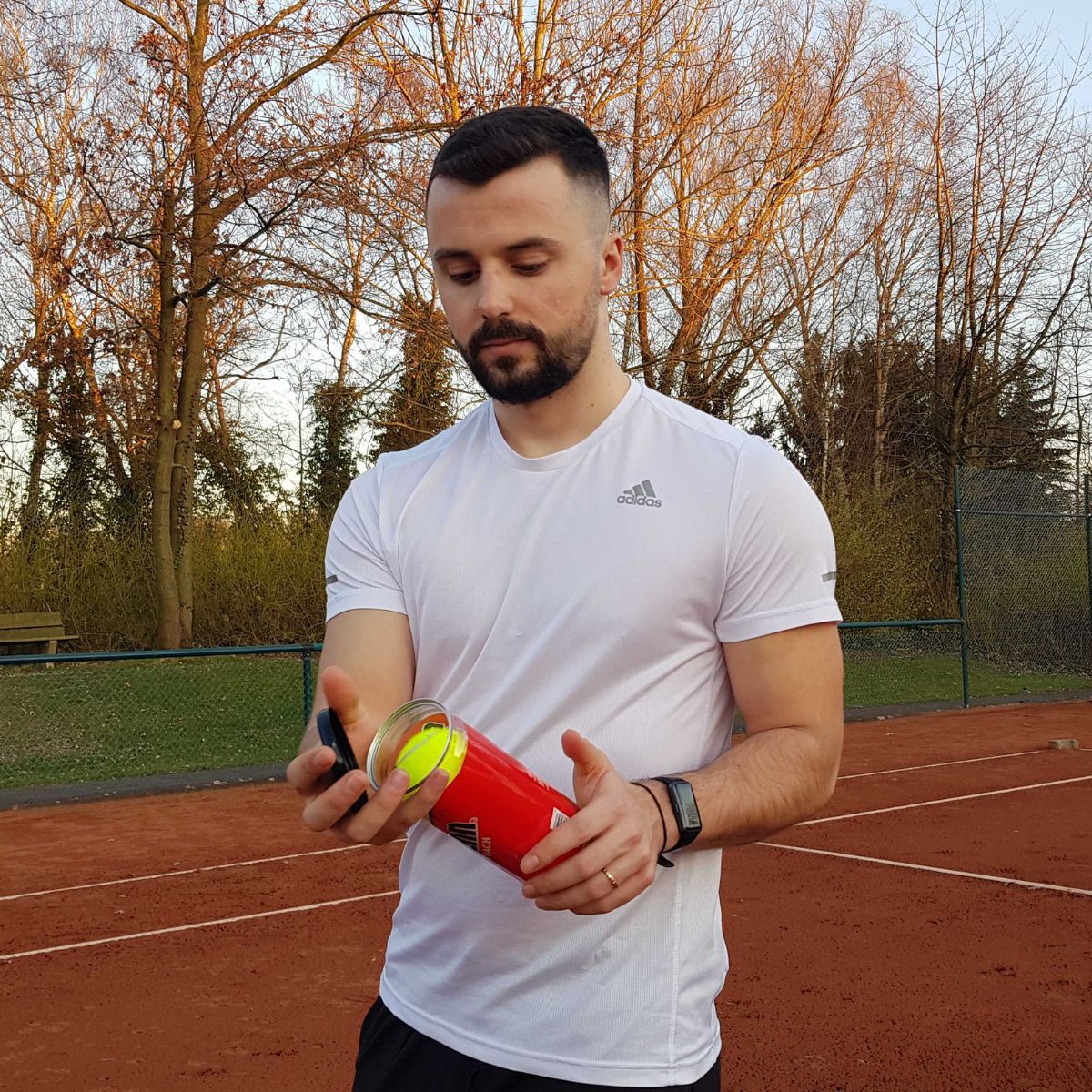- The eastern forehand grip is a type of grip used in tennis where the base knuckle of the index finger is placed at the third bevel, and then the hand wraps around the handle.
- The eastern forehand grip offers many advantages, such as being easy to use and flexible, but also has some drawbacks like lack of shot variation.
- Many famous tennis players have used this grip throughout history, including Roger Federer and Pete Sampras.
Known also as the “handshake grip,” there was a time in tennis history when the eastern forehand grip was the most popular amongst professional players. In the 1920s, Bill Tilden invented this type of grip to hit the ball with more force without spending too much physical energy.
Decades later, tennis legend of the 1970s Bjorn Borg revolutionized the game, using the eastern grip to add flexibility and be more aggressive in the field. He went ahead to win 11 grand slams, and immediately the eastern forehand grip spread like wildfire to players all across the world.
Even though it’s not as popular as it used to be, the eastern forehand grip is widely used amongst players of all skill levels, including tennis star Roger Federer. It’s very beneficial to practice it because once you have mastered and perfected the technique, your performance in the field will improve dramatically.
In this guide, you will learn everything you need to know about the eastern forehand grip, including the right techniques, the pros and cons, and other similar variations. Keep scrolling!
How To Hold An Eastern Forehand Grip
The eastern forehand grip is often considered the most natural way to hold a tennis racket for players. Supposing you post the fresh beginner phase, already know the anatomy of the body’s racket, and have picked the right type for yourself, now it’s time to learn how to hold an eastern forehand grip. Here is how you do it.
Place the base knuckle of your index finger at the third bevel, and simply wrap your hand around the racket’s handle. If you are left-handed, you should place the index finger’s base knuckle at the seventh handle and then wrap the hand around the handle. Yeap, it’s this easy, and most players learn this in no time.

Advantages of an Eastern Grip
The eastern forehand grip is the best way to hit flat and powerful shots, with a lower bounce that will fast put your opponent in defense mode. It is also versatile and perfect for a tennis player with an aggressive game style.
Here are some of the main benefits of the Eastern grip
- Easy to use – as I already mentioned, the eastern forehand grip comes naturally to most players. It fits perfectly to the shape of the hand and is easy to learn or use. This is what most beginners learn first, and usually, they just run with it until they are ready to learn more complex grip techniques.
- Flexible – The eastern grip sits between the continental and western forehand grip; therefore, the transition is easy and very fast. This flexibility allows players to be more aggressive and move with ease from the baseline for the groundstrokes up to the net for returns or volleys. If the opponent isn’t able to keep up with the speedy rhythm, you’ll have a clean victory, closing the winning point in no time.
- Consistency – The eastern grip is probably the best way to keep up with high-quality shots, even if you are a beginner. This grip puts less stress on your wrist, is comfortable, and it allows the player to position with ease during all shots. It helps to add effortless precision to the ball and direct where it goes in the field. Since the racket’s position is way much flatter compared to other grips, it also helps to generate heavy topspin and hit accurate shots.
- Power and height – If your game strategy is to hit the ball at different heights, so you’ll put the opponent in difficulty, the eastern grip is the way to do it. It makes it easier to hit the ball in a low bounce, so your opponent has to reach forward for the return and then shoot high to force the opponent to reach over for the ball. Constantly switching between these heights will exhaust even a professional athlete, and sooner or later, your opponent will make a mistake or a few of them. The eastern grip allows the players to add a lot of power with every hit, making it easier to repetitively hit the racket’s sweet spot and go for full swing shots.
Drawbacks of an Eastern Grip
Despite all these advantages, it’s only fair also to discuss the drawbacks the eastern forehand grip has. The main ones are as listed below.
- Not ideal for topspin – to keep it simple and straightforward, with an eastern grip is quite difficult to generate a lot of topspin. If you are one of those players who naturally hit topspin shots, it’s better to opt out for another grip type or at least some variation of the eastern forehand grip.
- Less net clearance – this comes as a result of the flatter shots that the eastern grip provides. It doesn’t give the player much time to fix loop shots for balls that rise higher above the net but drop quicker. As a result, you might lose a lot of points to your opponent.
- Lack of shot variation – let’s keep it honest; this grip is as simple as it is plain. It allows zero space for a burst of creativity or for being spontaneous. The shots are flat with low topspin, and that’s pretty much it. If your opponent has an excellent defensive strategy, using the eastern forehand grip would be a recipe for disaster. Even if you are a beginner, you should at least try to switch between different types of grip to catch the opponent off the guard.
- Requires heavy footwork – if you want to use the eastern grip, then you better start working intensively with your footwork. As a tennis player, you should be able to move your feet quickly and get in position to catch up with high rising shots coming your way the entire game. Have no doubts that poor footwork will be less forgiving, and you’ll most likely lose the game.
Which Pros Use the Eastern Grip
There are many tennis professionals that use the eastern grip and other of its variations as well. For decades, the eastern grips have helped many players to reach the highest height of success.
Roger Federer is the most well-known star, which has made this grip popular again. He used this grip to win multiply championships, break several records, and win the heart of millions of fans worldwide. If it’s good enough for him, the rest of us should at least consider it to master the eastern grip.
Another famous tennis star that used the eastern grip is Pete Sampras, whose tactic was to confuse the opponent with his impressive down-the-line forehand slice.
The rising tennis star Stefanos Tsitsipas also prefers the eastern grips, as the main part of his game strategy, even at important matches. In 2019s ATP Tour Finals, Tsitsipas put Domenic Theim in great difficulty more than once, thanks to his unforgivable forehand slices.
Other tennis professionals that use the eastern forehand grips are Juan Martin del Potro, Ashleigh Barty, Grigor Dimitrov, Angelique Kerber, Petra Kvitova, etc.

Western Forehand Grip vs. Semi Western
The western forehand grip is considered to be more radical; however, it is very popular amongst a wide range of players, especially intermediate level and professionals. Unlike the eastern grip, the western one is ideal for generating heavy topspin, even though it requires a lot more physical strength. The western grip makes it easier to deal with high bouncing balls too.
To form a western grip, place the base of your index finger in the fifth bevel of the racket, and then wrap your fingers around the handle.
The semi-western grip is a modified eastern forehand grip version. It sits between the western and eastern grip. This is the golden mean that everybody likes since it helps to generate more topspin while using less physical strength.
The transition to other grip is much easier and allows the player to have better defense while dealing with high bouncing balls. The semi-western grip is easier and is quite flexible, meaning it is easier for the wrist. All these reasons have made the semi-western grip rise quickly in popularity among beginners to top athletes.
Forming the semi-western grip is easy. Place the base of your index finger at the fourth bevel, and wrap your hand around the handle.
Final Thoughts
For beginners, the eastern forehand grip is the easiest and fastest to learn, and with time you can switch up to other grip types options. Mastering the right techniques of the eastern forehand grip will be very useful for you, as a tennis player, even at other stages of your journey as your skills improve. This type of grip offers a lot of advantages, even for professional athletes, especially for those who work well in all areas of the court.
However, your grip choice comes down to your own personal preferences, game style, and strategies. No matter where you stand, my best advice is to practice, practice, practice!
FAQs
The right tennis racket grip can make a huge difference in your game. The eastern forehand grip is one of the best tennis grips for flexibility, power, and more. We’ve compiled some frequently asked questions and their answers ahead to help players choose the right tennis grip
Q: What is an Eastern forehand grip?
The eastern forehand grip is the grip where the base of your index finger is placed at the top bevel of the racket, and then your hand wraps around the handle. This grip is recommended for beginners as it’s easy to learn and offers a lot of power.
Q: Is the Eastern forehand grip good?
The eastern forehand grip is a great grip for beginners as it offers a lot of power and is easy to learn. However, this grip isn’t recommended for advanced players as it doesn’t offer as much control.
Q: Can you serve with an Eastern grip?
The eastern grip can be used for serving, but it’s not recommended as it doesn’t offer much control. If you’re a beginner, it’s best to stick with the eastern forehand grip until you’ve mastered your serve.

